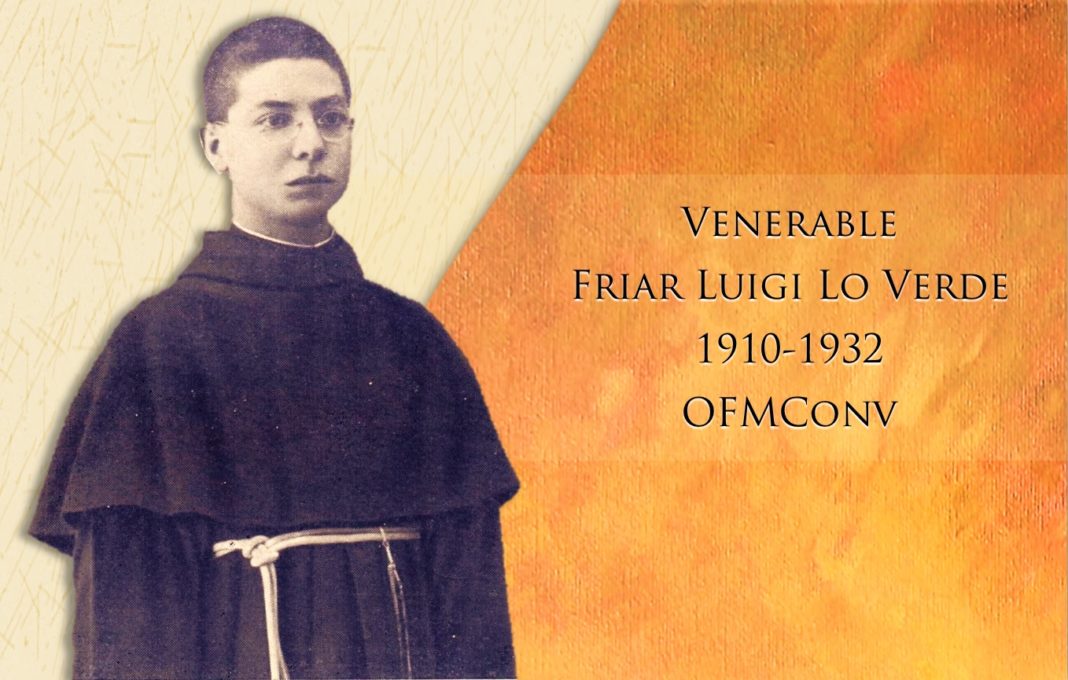Friar Luigi was born on December 20, 1910, in Tebourba, Tunisia. His parents had emigrated there from Palermo, Sicily, to look for work. His father was a builder and his mother ran a grocery store. After a few months, he and his family returned to Palermo. There he soon learned about Jesus. Living in a deeply religious environment, he received his first Communion and Confirmation when he was only six years old.
He began to develop a predisposition for solitary and silent prayer, often contemplating nature, which enchanted him. Therefore, it came as no surprise, and no one objected, when at age twelve, Luigi announced he wanted to enter the seminary. His parents first tried to get him to join a group of altar boys at the cathedral in Palermo, and later, enrolled him at the Oratory of San Filippo Neri. However, he resisted both places because he felt he was being called elsewhere.
One day he was given a biography to read about St. Francis of Assisi, but before he was halfway through the book he exclaimed: “Enough, this is my place!” Although his father accepted the idea of Luigi becoming a friar, his mother did not; she was too attached to her youngest son. He finally managed to get her consent by leaving a letter under her plate on her name day. The letter so moved her that she agreed to let him leave. When asked why he wanted to enter religious life, he would simply reply: “I want to be a religious so I can become a saint.”
On October 15, 1922, he entered the friary in Mussomeli, in the Sicilian Province of Caltanissetta. The following year, he was vested in the Franciscan habit and entered the Franciscan seminary in Montevago, in the Sicilian Province of Agrigento. He never forgot his reason for entering religious life: to “become a saint, a great saint.” His Spiritual Director, Friar Pellegrino CATALANO, has provided us with some valuable testimony from that period. In his writings, he describes Friar Luigi as a “model of religious virtue”, attesting that this young man, who only a few years before had a restless nature, now showed “unlimited obedience, almost childlike simplicity, and love for the Holy Eucharist, the Cross and the Virgin Mother.” Because of this, “those who approach him and see him, even lay persons, are impressed.”
Achieving such self-discipline was easier said than done. The little friar made every effort to control his exuberant character and dominate his restless and bubbly nature. Moreover, his daily struggle did not spring from some twisted sense of self-loathing. In his correspondence with his sisters, we read that he was completely happy in the total giving of himself, in his attempt to “satisfy the desire” that Jesus had for him: to become a saint.
His asceticism was made complicated, when at age sixteen, he was afflicted with long spells of anemia and suffered debilitating migraines, which left him unable to concentrate on his studies. However, anyone who thought his physical trials would impede his fervor or his spiritual impulses would be mistaken. Indeed, his fervor remained such that his Superiors had to step in officially and persuade him to reduce his penance and long hours of prayer.
Meanwhile, his disease progressed. However, there were short periods of improved health that allowed him to continue his studies, complete his novitiate year and, in 1926, make his simple profession. The next year he returned to Mussomeli, where he experienced a period he described as “a desert of spiritual aridity”. He was tortured by nightmares and frequent temptations. These revealed how the forces of evil were always trying to undermine his deep-seated desire for holiness. To combat these nightmares and the frightening monsters that disturbed his sleep, he would lash himself with his cord, pray the Rosary and cling to the Eucharist with moving confidence.
He returned to the friary in Palermo. Between fluctuating recurrences of his illness, he was able to receive the tonsure and minor orders. His disease finally claimed him on October 15, 1931, while he was at home, visiting his parents. He spent the next four months in bed and died peacefully on February 12, 1932, whispering: “How sweet is the passage to Heaven!” On May 16, 1992, his remains were enshrined in the Sacro Cuore di Gesù alla Noce Church in Palermo.
The diocesan inquiry took place from March 30, 1985, to October 19, 1988, at the diocesan curia of Palermo. The Congregation for the Causes of Saints recognized its legal validity on February 21, 1992. The Positio (completed in 1997) was discussed at a special meeting of the Theological Consultors, on May 8, 2014. After hearing the Postulation’s response to their questions, the Consultors ruled that heroicity of virtue was proven. With Pope Francis’ decree of June 14, 2016, the Servant of God can now be invoked with the title of Venerable. We are all invited to invoke his intercession, so that his beatification may soon be achieved.
Gianpiero PETTITI
www.santiebeati.it

















